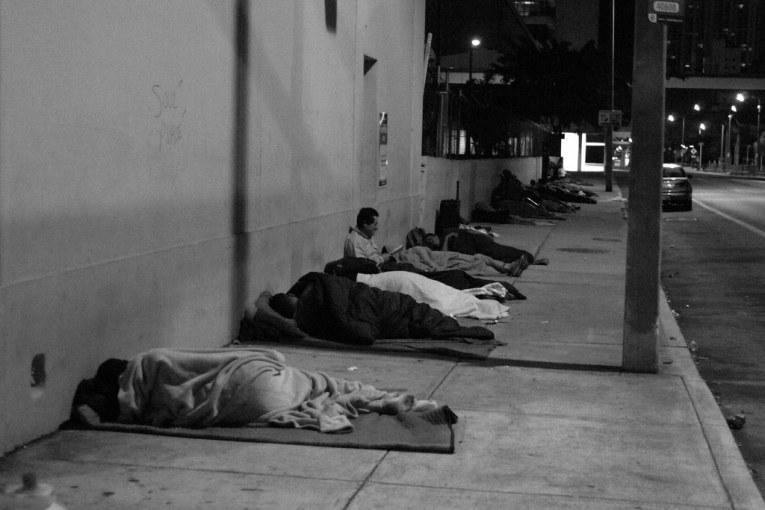

By Mark Dempsey
One of my family members came to the end of her rope, living in her car in a cold out-of-state winter. She’s not evil, or an aggressive panhandler. In fact, she was employed as a bookkeeper until a DUI and other events prevented her from getting a job. Our family sent money, but she drank it up. She eventually found inexpensive housing, and Medicaid to treat the knock-on effects of her drinking. We believe she’s sober now, but can’t be certain. Meanwhile, the rest of the family attended Al-Anon meetings–Al Anon is AA for family members of alcoholics–and got something like a spiritual awakening as a consequence. I’d recommend Al Anon to anyone.
The U.S. currently has more vacant houses than homeless people, so homelessness exists as a matter of public policy, not some economic shortfall, or a moral failing of the homeless themselves. The U.S. epidemic of homelessness actually began when the Kennedy administration decided to close the large “One-Flew-Over-the-Cuckoo’s-Nest” Federal institutions, substituting smaller, transitional housing within communities. In California, then-Governor Ronald Reagan also closed or scaled back funding for California’s large asylums besides cutting HUD’s affordable housing budget by 75% when he was president.
Then these government entities betrayed the mentally ill, not funding the transitional housing. Daniel Patrick Moynihan condemned it as the most shameful episode in his life of public service. Meanwhile, mentally ill people were effectively dumped on the streets. No, not all homeless are mentally ill, but this betrayal was a start for the problem.
Any population is going to have a certain portion of deviants, mental illness, and addiction. A recent Scientific American reports that deviants are a larger portion of families of the truly innovative and creative thinkers too, so the idea of simply eliminating them is counter-productive, never mind inhumane.
The real question is how we’re going to manage deviance. So far, sweeping the problem under the rug seems to be the preferred solution. My County Supervisor (Sue Frost) recently wrote to praise the effects of anti-camping ordinances, as though we can prevent mental illness and financial abuse that evicts people from their homes by denying the homeless whatever modest refuge they have managed to scrape together. This is not only heartless, it’s ineffective, and far more expensive than the actual remedies.
effects of anti-camping ordinances, as though we can prevent mental illness and financial abuse that evicts people from their homes by denying the homeless whatever modest refuge they have managed to scrape together. This is not only heartless, it’s ineffective, and far more expensive than the actual remedies.
But the American cult of vengeance will have its pound of flesh, insisting with medieval logic that homeless people have deserved their punishment. Incarcerating people for the crime of poverty is commonplace now, too. With only five percent of the world’s population, but 25% of its prisoners, the U.S. leads the world in incarceration. In per-capita terms, that figure is seven times more than the demographically-identical Canadians. So…does Canada have seven times more crime than the U.S? Answer: no; about the same.
Incarceration is not a cure for addiction, either, nor does it “scare addicts straight.” Actual medical treatment (rehab) has much better outcomes and is about one seventh the cost of incarceration.
The U.S. leads the world in medieval thinking, dealing with our population’s illnesses by funding punishments rather than treatment. One has to ask who the real crazy people are here, the homeless or the upstanding citizens who believe punishment cures illness. What’s next, jail time for diabetes?
Several communities have discovered that it’s actually cheaper to provide homes for such people rather than to use police to evict them from their camps, and emergency rooms to treat their illnesses. Finland has actually reduced its homeless population significantly with this “housing first” policy. We can do it too. Let’s.
Originally published on the Its Simpler Than It Looks Blog
